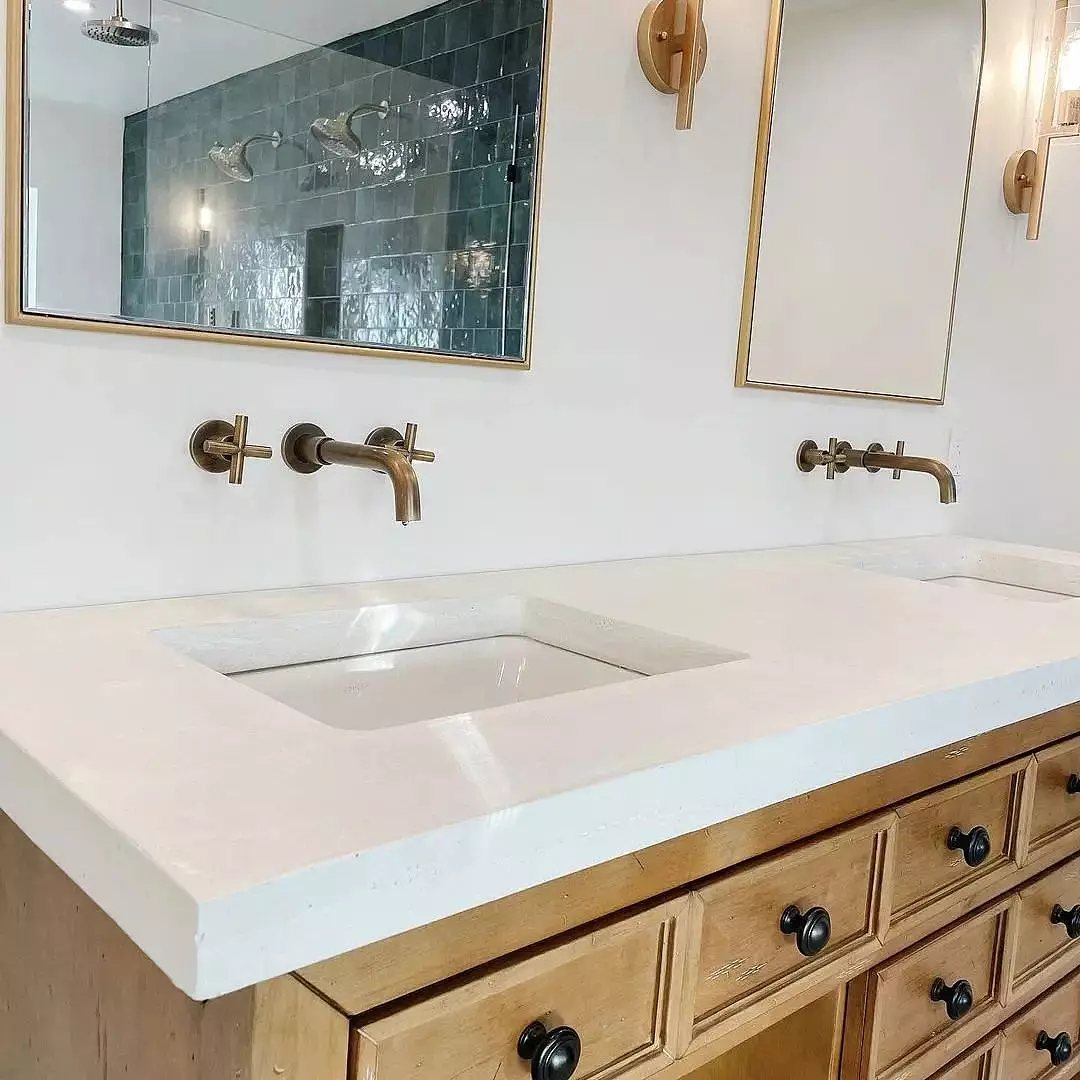Hints and Tips to Create Your Concrete Worktop
- Brockit Pro

- Mar 31
- 2 min read
Before You Pour...
Edge Forms can warp if left in direct sunlight or high heat – store them somewhere cool.
Use duct tape on cement board seams and around the outside of your forms to prevent leaks.
Pre-drill holes in your forms before installing to avoid stripping the cement board.
Set your drill to the lowest setting and avoid overtightening clips and screws.
Protect your cabinets and floors with painter’s plastic – pouring concrete is messy!
Lightly mist the cement board with water before pouring to stop it absorbing too much moisture from the mix.
For temporary support under overhangs, cut 2x4 legs slightly short and use shims – they’ll be easier to remove later.
Add extra Fibreglass Mesh around sink cut-outs or corners for added reinforcement and to help prevent cracking.
Mixing, pouring and finishing...
Use a corded ½” drill with a spiral paddle mixer – cordless drills don’t have enough power.
Always mix with cold water. Let your hose run a bit to flush out any warm water before filling.
Add your mix to the water gradually. If it starts thickening too much, pause and let the drill catch up before adding more.
If you don’t have a screed, a straight 2x4 or level will do the job.
Vibrate the edges to remove trapped air – tap with a float or use a sander along the form. A margin trowel also helps while pouring.
Keep an eye out for low spots as you pour – they’re hard to fix later. Fill gaps under your screed before the mix sets.
If pouring in hot weather or direct sunlight, cover your top with damp towels or plastic once it’s firm enough to prevent shrinkage or curling.
To remove faucet knockouts, twist from underneath. If it’s stuck, drill into the base, insert a lag bolt, and pull it free with pliers.
Use an electric orbital sander for finishing – hand sanding isn’t very effective.
Maintenance and long term care...
Avoid putting tape on sealed concrete – it can lift the sealer. Replace rubber feet on appliances with felt pads to prevent damage.
Clean sealed surfaces with regular household cleaners and a soft cloth or sponge. Avoid abrasive tools like magic erasers – they can dull the finish
Cover your outdoor worktops in winter. Freeze/thaw cycles can affect them.









Comments